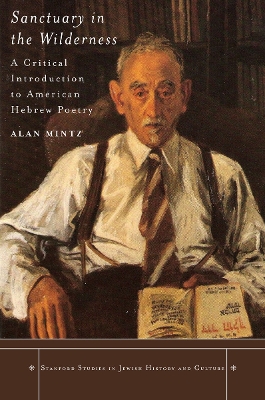Stanford Studies in Jewish History and Culture
2 total works
The effort to create a serious Hebrew literature in the United States in the years around World War I is one of the best kept secrets of American Jewish history. Hebrew had been revived as a modern literary language in nineteenth-century Russia and then taken to Palestine as part of the Zionist revolution. But the overwhelming majority of Jewish emigrants from Eastern Europe settled in America, and a passionate kernel among them believed that Hebrew provided the vehicle for modernizing the Jewish people while maintaining their connection to Zion. These American Hebraists created schools, journals, newspapers, and, most of all, a high literary culture focused on producing poetry. Sanctuary in the Wilderness is a critical introduction to American Hebrew poetry, focusing on a dozen key poets. This secular poetry began with a preoccupation with the situation of the individual in a disenchanted world and then moved outward to engage American vistas and Jewish fate and hope in midcentury. American Hebrew poets hoped to be read in both Palestine and America, but were disappointed on both scores. Several moved to Israel and connected with the vital literary scene there, but most stayed and persisted in the cause of American Hebraism.
Written in pieces over the last fifteen years of his life and published posthumously, S. Y. Agnon's A City in Its Fullness is an ambitious, historically rich sequence of stories memorializing Buczacz, the city of his birth. This town in present-day Ukraine was once home to a vibrant Jewish population that was destroyed twice over—in the First World War and again in the Holocaust. Agnon's epic story cycle, however, focuses not on the particulars of destruction, but instead reimagines the daily lives of Buczacz's Jewish citizens, vividly preserving the vanished world of early modern Jewry.
Ancestral Tales shows how this collection marks a critical juncture within the Agnon canon. Through close readings of the stories against a shifting historical backdrop, Alan Mintz presents a multilayered history of the town, along with insight into Agnon's fictional transformations. Mintz relates these narrative strategies to catastrophe literature from earlier periods of Jewish history, showing how Agnon's Buczacz is a literary achievement at once innovative in its form of remembrance and deeply rooted in Jewish tradition.

